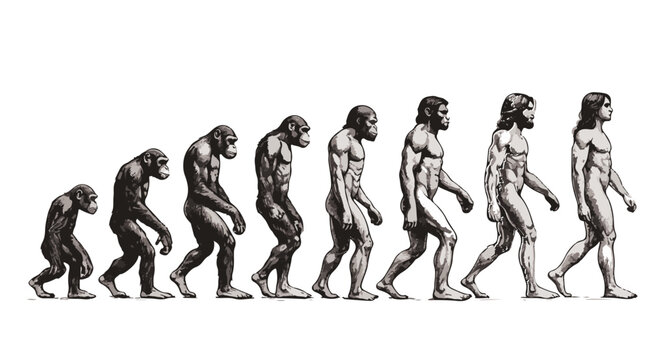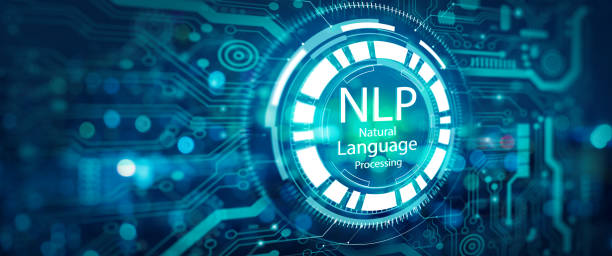Evolution is often thought of as something ancient, slow, and distant—a process that shaped dinosaurs, fish, birds, and humans over millions of years. But the truth is that evolution is not just history. It is alive, ongoing, and deeply woven into your everyday existence. Every breath you take, every bite of food you eat, every decision you make, and every interaction you have with your surroundings has been influenced by billions of years of evolutionary change.
When Charles Darwin introduced the idea of natural selection, he revealed not just the history of life but also the hidden patterns that still shape human health, behavior, and culture today. Evolution explains why we crave sugar, why we get sick, why we fall in love, and even why we laugh. Far from being a relic of the past, evolution is a force that continues to shape the way you live every single day.
Here are fifteen powerful, surprising, and fascinating ways evolution influences your life right now.
1. Your Body Is a Product of Evolution
Every part of your body is a living museum of evolutionary history. The shape of your spine, the structure of your hands, the way your lungs breathe air—all are results of evolutionary pressures over millions of years.
Your spine, for example, is curved because it evolved from ancestors who walked on all fours. When humans shifted to bipedal walking, the spine adapted to bear the weight of upright posture, but it didn’t do so perfectly. This is why back pain is so common. Your appendix, once useful for digesting plant-heavy diets, is now largely redundant. Even goosebumps are evolutionary leftovers, once used to puff up our fur-covered ancestors to appear larger to predators or to trap heat.
Every ache, every reflex, every feature of your body carries a story written by evolution.
2. Why You Get Sick
Illness is not just bad luck—it’s also part of our evolutionary legacy. Viruses and bacteria evolve rapidly, adapting to outsmart our immune systems. That’s why we constantly need new flu vaccines and why antibiotic resistance is such a serious problem.
But even non-infectious diseases have evolutionary roots. For example, conditions like diabetes and obesity are partly the result of what scientists call an “evolutionary mismatch.” Our ancestors evolved in environments where food was scarce and physical activity was constant. Today, we live with abundant calories and sedentary lifestyles, and our biology hasn’t fully caught up.
Evolution explains not only why we get sick but also why medicine must constantly evolve alongside pathogens.
3. The Food You Eat Is Shaped by Evolution
Every meal you enjoy is a product of evolutionary history. The fruits and vegetables you eat coevolved with pollinators like bees and birds. Their colors, flavors, and scents evolved to attract animals that would help spread their seeds.
Meanwhile, your own taste preferences evolved to help you survive. Sweetness signaled energy-rich fruit, bitterness often indicated poison, and salt was crucial for maintaining bodily fluids. Your cravings are not random—they are survival strategies programmed by evolution.
Even cooking is evolutionary. Richard Wrangham, a biological anthropologist, argues that the ability to cook food transformed human evolution, allowing us to extract more energy from meals, fuel bigger brains, and build complex societies.
4. Why You Crave Sugar and Fat
Your desire for sweets, salty snacks, and greasy foods is not just about modern advertising or convenience—it is deeply evolutionary. For most of human history, sugar and fat were rare but valuable sources of energy. Our ancestors who craved these foods survived and passed on their genes.
Today, supermarkets overflow with processed sugar and fat, but our instincts haven’t changed. That’s why resisting a slice of cake or a bag of chips feels like a battle against yourself. Your cravings are ancient voices from your evolutionary past.
5. Your Immune System Is an Evolutionary Battlefield
Your immune system is one of evolution’s most remarkable achievements. It has been honed by billions of years of battles between organisms and pathogens. Every fever, every antibody, every immune response is part of an ancient arms race.
Even allergies may be an evolutionary byproduct. Some scientists suggest that allergic reactions evolved as a defense against toxins and parasites. While pollen or peanuts are not dangerous in themselves, the overactive response of your immune system reflects its evolutionary role as a guardian.
When you sneeze, when you heal from a cut, or when you fight off a cold, you are participating in an evolutionary struggle older than humanity itself.
6. The Way You Fall in Love
Love may feel magical, but it has deep evolutionary roots. Attraction, bonding, and pair-bonding behaviors evolved to enhance reproductive success and ensure the survival of offspring.
The traits you find attractive—such as clear skin, symmetrical features, or kindness—are often linked to evolutionary advantages like health, fertility, and social cooperation. Hormones like oxytocin and dopamine, which flood your brain when you fall in love, are biochemical tools evolution designed to strengthen bonds between partners and parents.
Even heartbreak has an evolutionary function—it helps you learn from loss, recalibrate your choices, and ultimately improve reproductive success.
7. Why You Sleep and Dream
Sleep may seem like a waste of precious time, but it is one of evolution’s essential strategies for survival. While you rest, your brain consolidates memories, your body repairs itself, and your immune system strengthens.
Dreaming is more mysterious, but some scientists believe it evolved as a way to simulate threats, rehearse problem-solving, or process emotions. In other words, your dreams might be ancient evolutionary tools helping you prepare for survival in a complex world.
The fact that every animal with a nervous system sleeps shows just how critical this evolutionary adaptation has always been.
8. The Language You Speak
Language is one of humanity’s most extraordinary evolutionary adaptations. While other animals communicate, humans developed complex, symbolic language that allows us to share ideas, plan for the future, and build cultures.
The evolution of the human brain, vocal tract, and social structures created the perfect storm for language to emerge. Some scientists argue that gossip itself—sharing information about others—was an evolutionary advantage, helping humans navigate complex social groups.
Every word you speak, every story you tell, is an evolutionary masterpiece unfolding in real time.
9. Why You Laugh and Cry
Laughter and tears may seem uniquely human, but they are evolutionary tools for communication and bonding. Laughter likely evolved as a way to strengthen social bonds and signal safety—our ancestors who laughed together built trust and cooperation.
Crying, meanwhile, is one of the few behaviors that draws immediate empathy from others. Tears signal vulnerability and invite help from the group, increasing survival chances. Even today, laughter and tears serve as powerful tools to connect with others, rooted in ancient evolutionary needs.
10. The Stress You Feel
Stress is not just a modern problem—it is an evolutionary survival mechanism. When you face a threat, your body releases adrenaline and cortisol, triggering the “fight-or-flight” response. This reaction prepared our ancestors to run from predators or confront danger.
The problem is that modern life rarely involves lions or tigers. Instead, deadlines, traffic, and financial pressures trigger the same ancient stress response, often harming our health over time. Understanding the evolutionary roots of stress can help us manage it more effectively, turning an ancient survival tool into a modern coping strategy.
11. The Clothes You Wear
Even fashion has evolutionary roots. The use of clothing began not only as protection against the elements but also as a social and sexual signal. Clothing allowed humans to expand into new environments, survive harsh climates, and display identity or status.
Patterns of attraction—such as certain colors, ornaments, or symbols—are rooted in evolutionary psychology. Even today, the way you dress is influenced by deep evolutionary drives related to status, survival, and reproduction.
12. The Way You Learn
Learning itself is an evolutionary adaptation. The ability to acquire knowledge and pass it on to others is one of humanity’s greatest strengths. Children are naturally curious because exploration and imitation once increased survival chances.
Even play is evolutionary—it teaches problem-solving, social skills, and motor coordination. When you practice a skill, read a book, or solve a puzzle, you are using an ancient survival tool honed by evolution to adapt to changing environments.
13. Why You Age
Aging is one of the most puzzling evolutionary phenomena. From a survival standpoint, living forever would seem advantageous. Yet evolution favors reproduction, not immortality. Once you’ve passed on your genes, the evolutionary “pressure” to maintain your body weakens.
This is why cells accumulate damage, why DNA repairs slow, and why age-related diseases appear. Some scientists argue that aging itself may even have evolutionary benefits, such as preventing overpopulation or giving opportunities to younger generations.
Every wrinkle, every gray hair, is an evolutionary story unfolding on your skin.
14. The Technology You Use
Even technology is linked to evolution. The human brain evolved for problem-solving, creativity, and tool use. From the first stone tools to modern smartphones, technology is an extension of our evolutionary ingenuity.
Our hands, with opposable thumbs, evolved to manipulate objects skillfully. Our brains, capable of abstract thought, evolved to imagine possibilities beyond the present moment. Every app you use, every invention you rely on, traces its origins back to evolutionary traits that allowed humans to innovate and adapt.
15. The Choices You Make Every Day
Perhaps the most profound way evolution shapes your life is in the decisions you make—consciously or unconsciously. The foods you crave, the people you’re drawn to, the fears you carry, and the goals you pursue are all influenced by evolutionary pressures.
Why do you fear snakes more than electrical outlets, even though outlets are deadlier? Because your ancestors faced snakes, not outlets. Why do you sometimes feel compelled to compete or cooperate? Because both behaviors were crucial for survival.
Every choice, from what you eat for breakfast to how you interact with others, is guided by the ancient blueprint of evolution still etched in your brain and body.
Conclusion
Evolution is not a distant concept locked in the fossil record—it is the invisible force shaping your everyday life. It explains your cravings, your health, your relationships, your laughter, and even your dreams. You are not separate from evolution; you are its latest expression, carrying within you the story of billions of years of survival, adaptation, and change.
To live with awareness of evolution is to live with awe. It is to recognize that every breath, every heartbeat, every thought is the product of life’s grand experiment—a process that continues to unfold in you and all around you.






